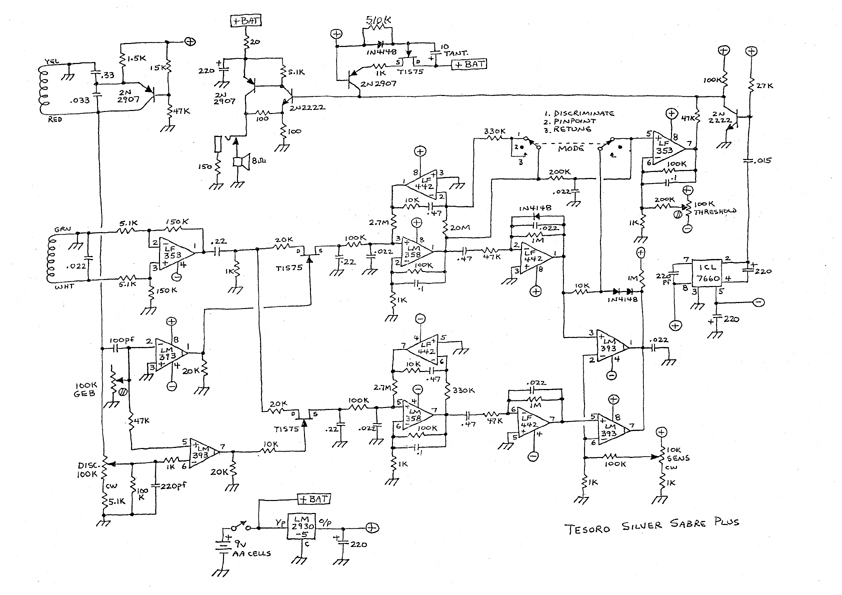
Hi All:
Here's a circuit fo the Silver Saber plus. It looks like there's an error in it... there's no provision for creating the negative voltage. I'm guessing there's a second regulator connected to the battery to create a -5v current that was ommitted.
I wish there were some details about the search coil, but you can't have everything. I may try to build this one, and hope that I can adjust it... I have doubts about my abilities. Looks like a very nice detector, though.
Have fun
BG


Comment